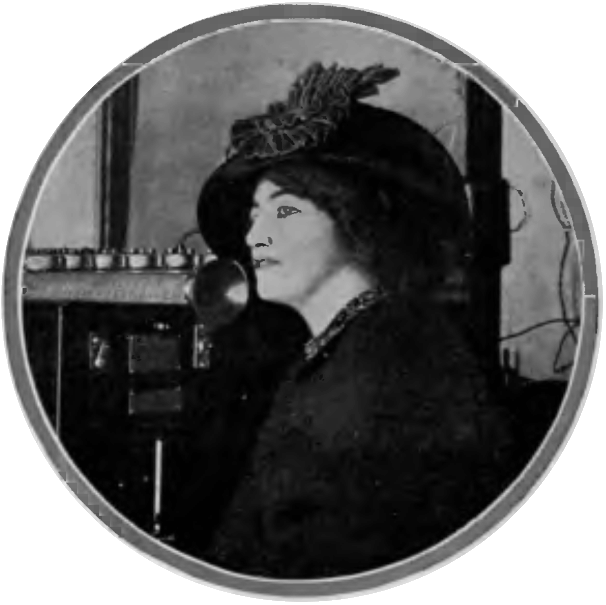|
CJIT-FM
CJIT-FM is a Canadian radio station that broadcasts a contemporary hit radio format on the frequency 106.7 FM in Lac-Mégantic, Quebec. History The station originally began broadcasting in 1968 as CKFL broadcasting at 1340 AM, moved to 1400 AM in 1972 and then to its current FM frequency in 2000 as CJIT. In March 2007, Les Productions du temps perdu inc. received permission to acquire CJIT-FM from 9063-0104 Québec inc., doing business under the name of Radio Gaé-Rit Lac Mégantic. In April 2012, the station was sold to the Montréal-based Attraction Radio Attraction may refer to: * Interpersonal attraction, the attraction between people which leads to friendships, platonic and romantic relationships ** Physical attractiveness, attraction on the basis of beauty ** Sexual attraction * Object or ev ... group. On July 6, 2013 the station was knocked temporarily off-air as a result of the Lac-Mégantic derailment which destroyed much of the town centre but did return with ... [...More Info...] [...Related Items...] OR: [Wikipedia] [Google] [Baidu] |
Lac-Mégantic, Quebec
Lac-Mégantic () is a town in the Eastern Townships region of Quebec, Canada. It is located on Lac Mégantic, a freshwater lake after which the town was named. Situated in the former Frontenac County in the historic Eastern Townships, Lac-Mégantic is the seat of Le Granit Regional County Municipality and of the judicial district of Mégantic. Lac-Mégantic was a tourist destination and a producer of forestry products, furniture, Masonite doors, particleboard, and architectural granite before July 6, 2013, when the Lac-Mégantic rail disaster led to a massive fire and deadly explosion of petroleum tank cars that devastated the downtown and killed 47 people. History Prior to contact with Europeans, the region was inhabited by the Abenaki. Archaeological digs found that the Amerindians had been in the region for over 12,000 years, making this the oldest known site of human occupation in Quebec. The name of Mégantic comes from the Abenaki word "namesokanjik" which tra ... [...More Info...] [...Related Items...] OR: [Wikipedia] [Google] [Baidu] |
Lac-Mégantic Rail Disaster
The Lac-Mégantic rail disaster occurred in the town of Lac-Mégantic, Quebec, Canada, on July 6, 2013, at approximately 01:15 EDT, when an unattended 73-car Montreal, Maine and Atlantic Railway (MMA) freight train carrying Bakken Formation crude oil rolled down a 1.2% grade from Nantes and derailed downtown, resulting in the explosion and fire of multiple tank cars. Forty-seven people were killed. More than thirty buildings in Lac-Mégantic's town centre, roughly half of the downtown area, were destroyed, and all but three of the thirty-nine remaining buildings had to be demolished due to petroleum contamination of the townsite. Initial newspaper reports described a blast radius. The Safety Board identified multiple causes for the accident, principally leaving a train unattended on a main line, failure to set enough handbrakes, and lack of a backup safety mechanism. The death toll of 47 makes this the fourth-deadliest rail accident in Canadian history, and the deadliest ... [...More Info...] [...Related Items...] OR: [Wikipedia] [Google] [Baidu] |
Megahertz
The hertz (symbol: Hz) is the unit of frequency in the International System of Units (SI), equivalent to one event (or cycle) per second. The hertz is an SI derived unit whose expression in terms of SI base units is s−1, meaning that one hertz is the reciprocal of one second. It is named after Heinrich Rudolf Hertz (1857–1894), the first person to provide conclusive proof of the existence of electromagnetic waves. Hertz are commonly expressed in multiples: kilohertz (kHz), megahertz (MHz), gigahertz (GHz), terahertz (THz). Some of the unit's most common uses are in the description of periodic waveforms and musical tones, particularly those used in radio- and audio-related applications. It is also used to describe the clock speeds at which computers and other electronics are driven. The units are sometimes also used as a representation of the energy of a photon, via the Planck relation ''E'' = ''hν'', where ''E'' is the photon's energy, ''ν'' is its frequency, ... [...More Info...] [...Related Items...] OR: [Wikipedia] [Google] [Baidu] |
Quebec
Quebec ( ; )According to the Government of Canada, Canadian government, ''Québec'' (with the acute accent) is the official name in Canadian French and ''Quebec'' (without the accent) is the province's official name in Canadian English is one of the thirteen provinces and territories of Canada. It is the List of Canadian provinces and territories by area, largest province by area and the second-largest by Population of Canada by province and territory, population. Much of the population lives in urban areas along the St. Lawrence River, between the most populous city, Montreal, and the provincial capital, Quebec City. Quebec is the home of the Québécois people, Québécois nation. Located in Central Canada, the province shares land borders with Ontario to the west, Newfoundland and Labrador to the northeast, New Brunswick to the southeast, and a coastal border with Nunavut; in the south it borders Maine, New Hampshire, Vermont, and New York (state), New York in the United ... [...More Info...] [...Related Items...] OR: [Wikipedia] [Google] [Baidu] |
Contemporary Hit Radio
Contemporary hit radio (also known as CHR, contemporary hits, hit list, current hits, hit music, top 40, or pop radio) is a radio format that is common in many countries that focuses on playing current and recurrent popular music as determined by the Top 40 music charts. There are several subcategories, dominantly focusing on rock, pop, or urban music. Used alone, ''CHR'' most often refers to the CHR-pop format. The term ''contemporary hit radio'' was coined in the early 1980s by '' Radio & Records'' magazine to designate Top 40 stations which continued to play hits from all musical genres as pop music splintered into Adult contemporary, Urban contemporary, Contemporary Christian and other formats. The term "top 40" is also used to refer to the actual list of hit songs, and, by extension, to refer to pop music in general. The term has also been modified to describe top 50; top 30; top 20; top 10; hot 100 (each with its number of songs) and hot hits radio formats, but carry ... [...More Info...] [...Related Items...] OR: [Wikipedia] [Google] [Baidu] |
Attraction Radio
Attraction may refer to: * Interpersonal attraction, the attraction between people which leads to friendships, platonic and romantic relationships ** Physical attractiveness, attraction on the basis of beauty ** Sexual attraction * Object or event that is attractive ** Tourist attraction, a place of interest where tourists visit *** Amusement park attraction *Attraction in physics ** Electromagnetic attraction *** Magnetism ** Gravity ** Strong nuclear force ** Weak nuclear force Other uses * Attraction basin (a.k.a. attractor), in dynamical systems * Attraction (grammar), the process by which a relative pronoun takes on the case of its antecedent * Attraction (horse) (foaled 2001) * Attraction (2017 film), a Russian science fiction action film focusing upon an extraterrestrial spaceship crash-landing * Attraction (2018 film), a Bulgarian romantic comedy film See also * Attractive nuisance doctrine * Attract (other) * Law of attraction (other) Law of ... [...More Info...] [...Related Items...] OR: [Wikipedia] [Google] [Baidu] |
Kilowatt
The watt (symbol: W) is the unit of power or radiant flux in the International System of Units (SI), equal to 1 joule per second or 1 kg⋅m2⋅s−3. It is used to quantify the rate of energy transfer. The watt is named after James Watt (1736–1819), an 18th-century Scottish inventor, mechanical engineer, and chemist who improved the Newcomen engine with his own steam engine in 1776. Watt's invention was fundamental for the Industrial Revolution. Overview When an object's velocity is held constant at one metre per second against a constant opposing force of one newton, the rate at which work is done is one watt. : \mathrm In terms of electromagnetism, one watt is the rate at which electrical work is performed when a current of one ampere (A) flows across an electrical potential difference of one volt (V), meaning the watt is equivalent to the volt-ampere (the latter unit, however, is used for a different quantity from the real power of an electrical c ... [...More Info...] [...Related Items...] OR: [Wikipedia] [Google] [Baidu] |
Radio Station
Radio broadcasting is transmission of audio (sound), sometimes with related metadata, by radio waves to radio receivers belonging to a public audience. In terrestrial radio broadcasting the radio waves are broadcast by a land-based radio station, while in satellite radio the radio waves are broadcast by a satellite in Earth orbit. To receive the content the listener must have a broadcast radio receiver (''radio''). Stations are often affiliated with a radio network which provides content in a common radio format, either in broadcast syndication or simulcast or both. Radio stations broadcast with several different types of modulation: AM radio stations transmit in AM ( amplitude modulation), FM radio stations transmit in FM (frequency modulation), which are older analog audio standards, while newer digital radio stations transmit in several digital audio standards: DAB (digital audio broadcasting), HD radio, DRM ( Digital Radio Mondiale). Television bro ... [...More Info...] [...Related Items...] OR: [Wikipedia] [Google] [Baidu] |
FM Radio
FM broadcasting is a method of radio broadcasting using frequency modulation (FM). Invented in 1933 by American engineer Edwin Armstrong, wide-band FM is used worldwide to provide high fidelity sound over broadcast radio. FM broadcasting is capable of higher fidelity—that is, more accurate reproduction of the original program sound—than other broadcasting technologies, such as AM broadcasting. It is also less susceptible to common forms of interference, reducing static and popping sounds often heard on AM. Therefore, FM is used for most broadcasts of music or general audio (in the audio spectrum). FM radio stations use the very high frequency range of radio frequencies. Broadcast bands Throughout the world, the FM broadcast band falls within the VHF part of the radio spectrum. Usually 87.5 to 108.0 MHz is used, or some portion thereof, with few exceptions: * In the former Soviet republics, and some former Eastern Bloc countries, the older 65.8–74 M ... [...More Info...] [...Related Items...] OR: [Wikipedia] [Google] [Baidu] |
AM Radio
AM broadcasting is radio broadcasting using amplitude modulation (AM) transmissions. It was the first method developed for making audio radio transmissions, and is still used worldwide, primarily for medium wave (also known as "AM band") transmissions, but also on the longwave and shortwave radio bands. The earliest experimental AM transmissions began in the early 1900s. However, widespread AM broadcasting was not established until the 1920s, following the development of vacuum tube receivers and transmitters. AM radio remained the dominant method of broadcasting for the next 30 years, a period called the "Golden Age of Radio", until television broadcasting became widespread in the 1950s and received most of the programming previously carried by radio. Subsequently, AM radio's audiences have also greatly shrunk due to competition from FM ( frequency modulation) radio, Digital Audio Broadcasting (DAB), satellite radio, HD (digital) radio, Internet radio, music streaming ser ... [...More Info...] [...Related Items...] OR: [Wikipedia] [Google] [Baidu] |
Radio Stations In Estrie
Radio is the technology of signaling and communicating using radio waves. Radio waves are electromagnetic waves of frequency between 30 hertz (Hz) and 300 gigahertz (GHz). They are generated by an electronic device called a transmitter connected to an antenna which radiates the waves, and received by another antenna connected to a radio receiver. Radio is very widely used in modern technology, in radio communication, radar, radio navigation, remote control, remote sensing, and other applications. In radio communication, used in radio and television broadcasting, cell phones, two-way radios, wireless networking, and satellite communication, among numerous other uses, radio waves are used to carry information across space from a transmitter to a receiver, by modulating the radio signal (impressing an information signal on the radio wave by varying some aspect of the wave) in the transmitter. In radar, used to locate and track objects like aircraft, ships, spacecraft ... [...More Info...] [...Related Items...] OR: [Wikipedia] [Google] [Baidu] |
Contemporary Hit Radio Stations In Canada
Contemporary history, in English-language historiography, is a subset of modern history that describes the historical period from approximately 1945 to the present. Contemporary history is either a subset of the late modern period, or it is one of the three major subsets of modern history, alongside the early modern period and the late modern period. In the social sciences, contemporary history is also continuous with, and related to, the rise of postmodernity. Contemporary history is politically dominated by the Cold War (1947–1991) between the Western Bloc, led by the United States, and the Eastern Bloc, led by the Soviet Union. The confrontation spurred fears of a nuclear war. An all-out "hot" war was avoided, but both sides intervened in the internal politics of smaller nations in their bid for global influence and via proxy wars. The Cold War ultimately ended with the Revolutions of 1989 and the dissolution of the Soviet Union in 1991. The latter stages and ... [...More Info...] [...Related Items...] OR: [Wikipedia] [Google] [Baidu] |

_(10569677275).jpg)





